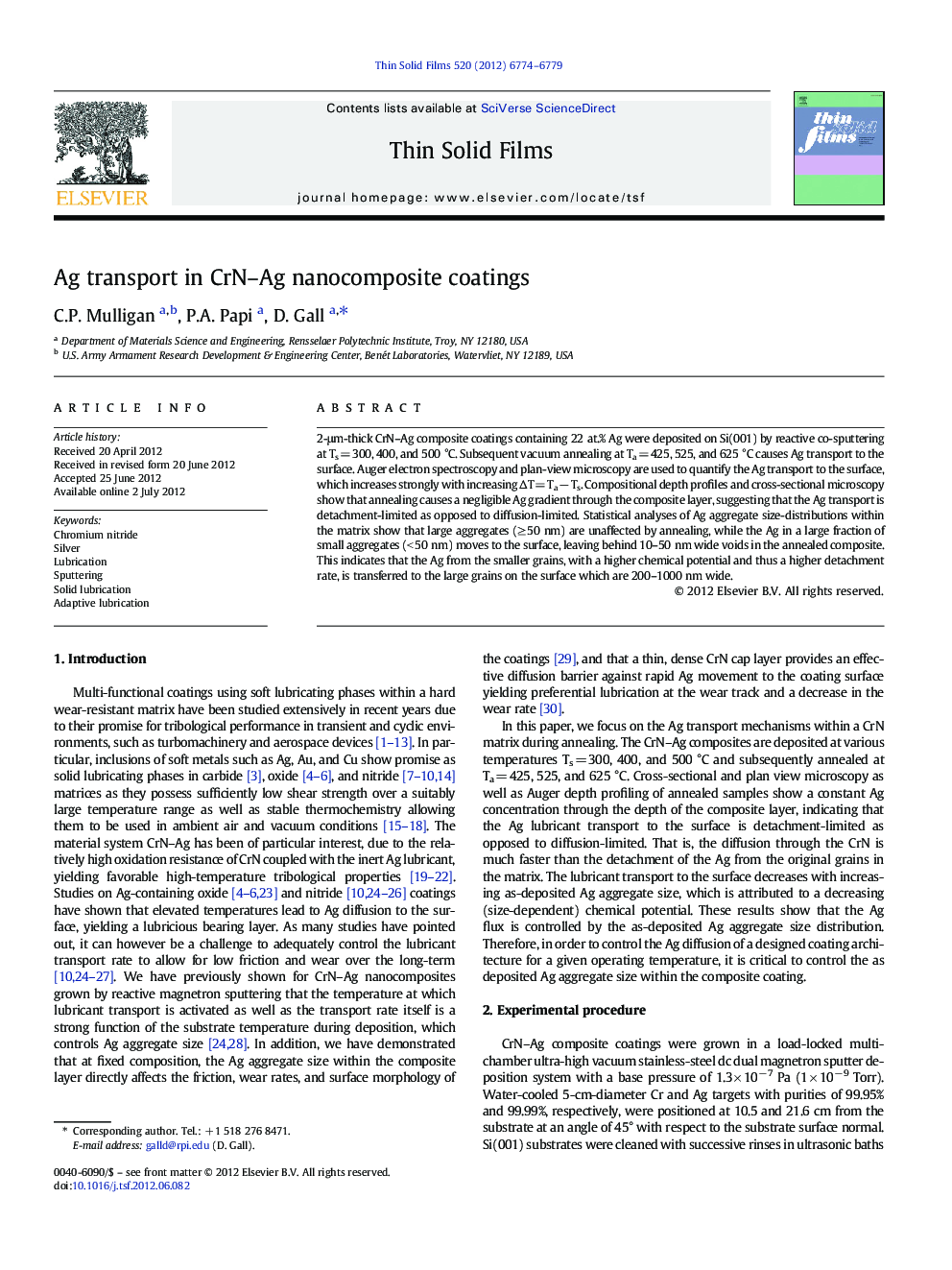| Article ID | Journal | Published Year | Pages | File Type |
|---|---|---|---|---|
| 1666986 | Thin Solid Films | 2012 | 6 Pages |
2-μm-thick CrN–Ag composite coatings containing 22 at.% Ag were deposited on Si(001) by reactive co-sputtering at Ts = 300, 400, and 500 °C. Subsequent vacuum annealing at Ta = 425, 525, and 625 °C causes Ag transport to the surface. Auger electron spectroscopy and plan-view microscopy are used to quantify the Ag transport to the surface, which increases strongly with increasing ΔT = Ta − Ts. Compositional depth profiles and cross-sectional microscopy show that annealing causes a negligible Ag gradient through the composite layer, suggesting that the Ag transport is detachment-limited as opposed to diffusion-limited. Statistical analyses of Ag aggregate size-distributions within the matrix show that large aggregates (≥ 50 nm) are unaffected by annealing, while the Ag in a large fraction of small aggregates (< 50 nm) moves to the surface, leaving behind 10–50 nm wide voids in the annealed composite. This indicates that the Ag from the smaller grains, with a higher chemical potential and thus a higher detachment rate, is transferred to the large grains on the surface which are 200–1000 nm wide.
► CrN–Ag coatings were deposited at Ts = 300–500 °C and annealed at Ta = 425–625 °C. ► Ag diffuses from aggregates in the coating to the surface, if Ta > Ts. ► During annealing, aggregates < 50 nm become voids, those > 50 nm are unaffected. ► The Ag transport is detachment rather than diffusion limited.
